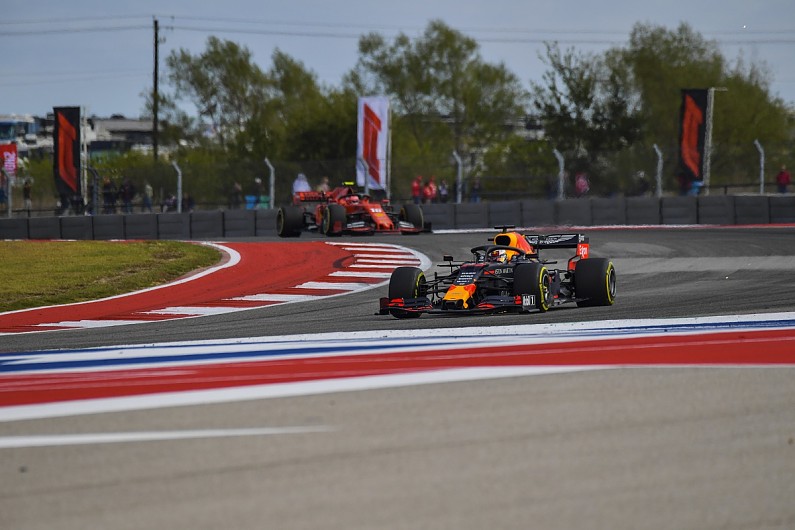
On Saturday morning in Austin, the FIA issued a technical directive - the 35th of the year - giving details of a system that Red Bull Racing had proposed that might have allowed the team to race more than the permitted fuel flow. This was rejected by the FIA as being clearly illegal.
Red Bull will have known this in advance and so it is clear that the purpose the request was to get a ruling from the FIA not for a system that Red Bull wanted to use, but rather one that the team believed a rival was using. This is an elegant way to stop dubious systems being run, without the need for any public fighting, which is on no real value to the sport.
The Red Bull request related to a system by which the team was able to use more fuel than is allowed under the fuel flow regulations, but working around (or disrupting) the ultrasonic pulses sent by the fuel flow metering units, which measure fuel consumption over the course of a race and peak consumption. However, the measurement is not constant, but rather done by intermittent sampling. In theory, therefore, teams can use more fuel between each sampling, or can use aliasing techniques which mean that signals can become indistinguishable. There is no doubt that this is illegal and Red Bull will have known that in advance, but it does provide a way for the team to get an FIA ruling that will stop such activity. Using more fuel than the allowed fuel flow could create a situation in which a team could be able to burn more fuel at critical points during a race weekend, giving an engine extra power when accelerating at low speeds, which would then allow the car to carry more speed as the car accelerates and consequently produce a higher top speed.
The use of aliasing is a very complex subject, which is why reports have been confused, but raising fuel flow between the ultrasonic pulses might (theoretically) be possible, or aliasing could cause an effect similar to the optical illusion seen with film when frames captured by a camera are not sufficiently fast to capture a wheel’s true rotation, which then gives the impression that the wheel is turning backwards , or more slowly than it actually is.
Red Bull was clearly of the opinion that one of its rivals might have been using such a system.
It was thus quite a coincidence that Ferrari’s performance dived in the race in Austin, immediately after the directive came out.
Ferrari team principal Mattia Binotto clearly understood what people were thinking and spoke out about suggestions that the directive had had an impact on the performance of the cars.
“I heard comments at the end of the race, which I find very disappointing,” he said. “It’s not good for the sport and I think everybody should be a bit more cautious.”
Binotto said that the Ferraris had been competitive in the qualifying session, but had failed for different reasons in the race, resulting in Charles Leclerc finishing 50s behind winner Valtteri Bottas in the race.
The F1 circus will be watching to see what happens in Brazil at the end of next week.
Source : JSBL
No comments:
Post a Comment